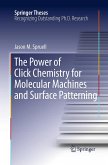Nanocatalysis is one of the most exciting subfields to have emerged from nanoscience. Its central aim is the control of chemical reactions by changing the size, dimensionality, chemical composition and morphology of the reaction center and by changing the kinetics using nanopatterning of the reaction centers. This approach opens up new avenues for atom-by-atom design of nanocatalysts with distinct and tunable chemical activity, specificity, and selectivity. This book is intended to give a pedagogical and methodological overview of this exciting and growing field and to highlight specific examples of current research. In this way, it serves both as an instructive introduction for graduate students who plan to enter the field and as a reference work for scientists already active in this and related areas.
From the reviews:
"This book is one in the series Nanoscience and Technology by Springer. It should be useful to chemists, chemical engineers, and material scientists entering the field of nanocatalysts as well as to experts already in the area. ... this book on the whole is an excellent contribution. It could be used as a textbook, reference, and starting point for other books in this series. It is easy to read and well organized as well as contains a significant number of graphics of all types." (Steven L. Suib, Journal of the American Chemical Society, Vol. 129 (21), 2007)
"This book is one in the series Nanoscience and Technology by Springer. It should be useful to chemists, chemical engineers, and material scientists entering the field of nanocatalysts as well as to experts already in the area. ... this book on the whole is an excellent contribution. It could be used as a textbook, reference, and starting point for other books in this series. It is easy to read and well organized as well as contains a significant number of graphics of all types." (Steven L. Suib, Journal of the American Chemical Society, Vol. 129 (21), 2007)








